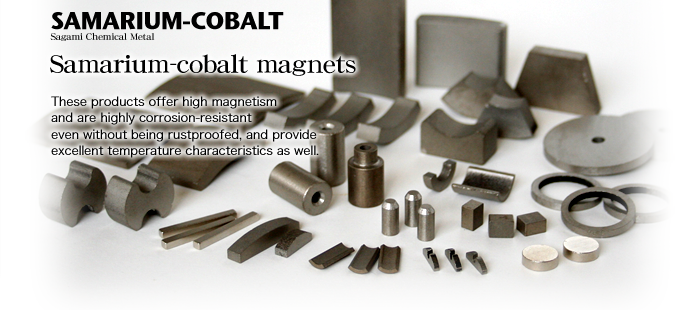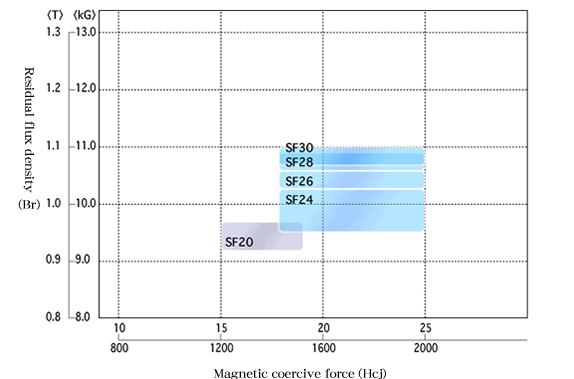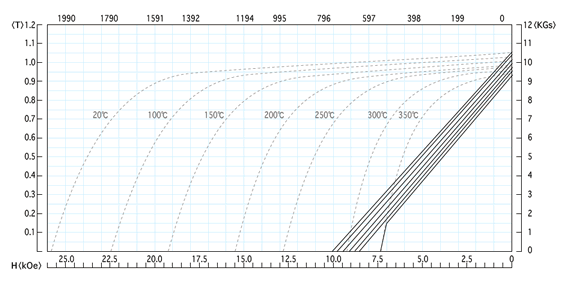These magnets are characterized by high magnetism, and are also resistant to both rust and high temperature.
These magnets represent the highest magnetic energy product after neodymium magnets. They are also highly corrosion-resistant without being rustproofed and offer excellent temperature characteristics as well. These are rare-earth magnets resistant to high temperature.

These sintered products consist mainly of samarium (Sm) and cobalt (Co), and are available with two kinds of material: 1-5 series and 2-17 series.
The 1-5 series has high magnetic coercive force (Hcj), but is easy to magnetize and adjust magnetism. Magnets of this series also exhibit relatively stable performance under changing temperature.
The 2-17 series has high magnetism and offers excellent temperature stability in magnetic characteristics as well. Samarium-cobalt magnets are relatively low in mechanical strength. Caution should therefore be exercised in handling these magnets to prevent chipping and cracking.
|


















